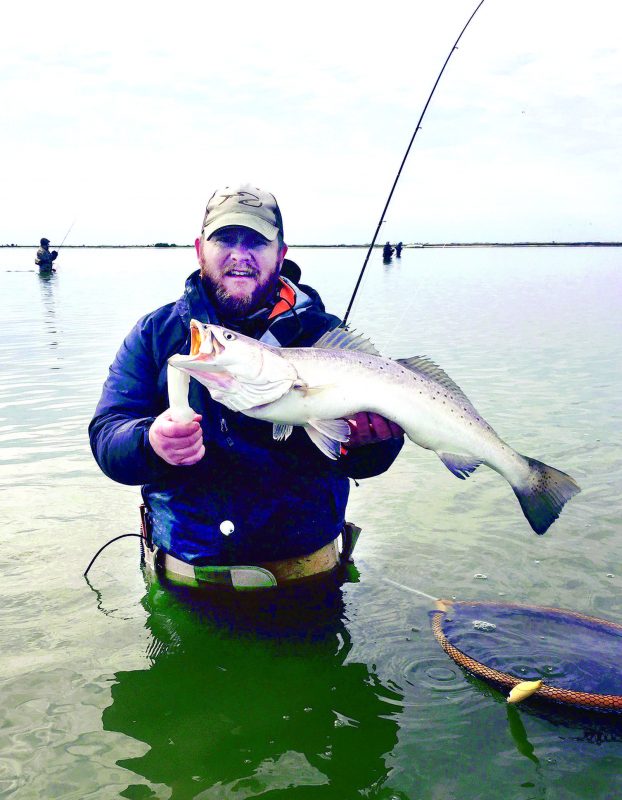
Recently I read a post on a fishing forum basically saying that big trout that are shallow will stay shallow, no matter what the tide and temperature are doing, and big trout that are deep will stay deep. In dealing with nature there are no absolutes.
There are certainly trout that seem to go on lockdown in shallow water, and theoretically won’t leave a back lake no matter what. Those trout will hold in shallow water until the last signs of life fade with water temperatures dropping below the 40-degree mark. Sometimes this coincides with a drop in tide height that leaves them stuck behind an inlet delta formed at what they thought were their entrance and exit routes. In warmer winters, those trout will survive and feed in the shallows all winter, some in water less than 18 inches deep.
We also know that deep water can be inhabited by very large spotted sea trout. Big trout use depth to isolate themselves from fishermen just as much as shallow trout use the lack of depth to isolate themselves from predators. Winter trout in water deeper than 8 feet are not as easy to specifically target, but many times they do get bigger by being in a more stable temperature environment. Depth insulates trout from temperature variation, and while it may be colder in the depths during a brief mid-winter warming trend, the temperature will be more stable.
There are also big trout that go into a shallow area during warming trends and exit as the tide drops out of a secluded gut or tertiary bay or back lake. Most of those trout will pull out with the tide and have no choice to exit the area due to the water receding. I’ve caught big trout in areas that were left high and dry after the tide dropped out. Would those fish have stayed? We don’t know.
Is there a best way to catch a gator spotted sea trout? I don’t believe there is a best or absolute answer to this, but from my experience, fishing for big trout shallow allows the angler to limit the area they are fishing and specifically target a large specimen.
Know your area and learn as much as you can about numerous ways to catch big trout. The ultimate place to be is where you can interpret the conditions and present lures to big fish in different habitats based on various weather and tide scenarios. Knowing when to fish shallow and when to fish deep and what lures to use in each condition is the pinnacle of fishing for big spotted sea trout.
Learning that information will take some investment on your part, both in finding the best information resources such as articles, books, DVDs and seminars as well as putting the time in on the water with those who know what they are doing. It’s all about your journey to catching your next personal best.
Tobin created TroutSupport.com – Tech Support for Trout and Redfish anglers.